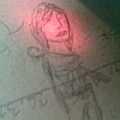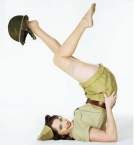Alpha77
Posts: 2116
Joined: 9/24/2010
Status: offline

|
Seems the 25 they use in game is the otimal range at best conditions for a medium bomber (not a Kate or smaller float plane) also it is only the latest SD version that has the 25 max range...
SD-A, SD-1, SD-2, and SD-3 Long Wave Search for Submarines
SD-2 on Submarine
SD-2 on Submarine
DESCRIPTION AND USES: Long-wave aircraft warning sets. SD-a, SD-1, and SD-2 are installed on submarines and give range only. SD-3, for small auxiliaries, supplies range and bearing. All sets are equipped with "A" scopes, and have provisions for IFF (identification) connections.
PERFORMANCE: SD-a, SD-1 and SD-2, with antenna at 40' above water, have a reliable maximum range of 15 miles on medium bombers at 10,000' altitude. SD-3, with antenna at 80 ft. has a reliable maximum range of 25 miles on a medium bomber at 10,000'. Range accuracy is ± 500 yards. Bearing accuracy of SD-3 is ± 10°.
TRANSPORTABILITY: There is no standard packing procedure for SD-a. SD-1 is packed in 20 units, SD-2 in 17, and SD-3 in 23. The heaviest package for each of these sets is 417 lbs. When crated SD-1 weighs 2036 lbs; SD-2, 1318 lbs; SD-3, 2548 lbs.
INSTALLATION: The number of components and approximate total weight of each set are: SD-a -- 8 units, 500 lbs; SD-1 -- 6 units, 800 lbs; SD-2 -- 8 units, 550 lbs; SD-3 -- 9 units, 700 lbs. In each set the transmitter is the heaviest unit, weighing 300 lbs. Antenna assembly of SD-a, SD-1 and SD-2 weighs 34 lbs; of SD-3, 78 lbs. They should be mounted as high as possible above the water.
PERSONNEL: Each set requires one operator per shift.
POWER: For SD-a, SD-1, and SD-2, the primary power required is 115 volts, 60 cycles, 1130 watts. SD-3 requires 1277 watts.
https://www.ibiblio.org/hyperwar/USN/ref/Radar/Radar-1.html
Ofc the Allied subs need every help they can get, not that too many would be sunk for unhistoric results
|
 Printable Version
Printable Version











 Guess not only P38 but also the P40K is a new danger. Not to speak of the planes arriving in 43...
Guess not only P38 but also the P40K is a new danger. Not to speak of the planes arriving in 43... 
 .
. 
 .
.







 New Messages
New Messages No New Messages
No New Messages Hot Topic w/ New Messages
Hot Topic w/ New Messages Hot Topic w/o New Messages
Hot Topic w/o New Messages Locked w/ New Messages
Locked w/ New Messages Locked w/o New Messages
Locked w/o New Messages Post New Thread
Post New Thread